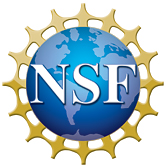
Robohub.org
Beyond 5G: NSF awards $6.1 million to accelerate advanced wireless research

The National Science Foundation (NSF) announced a $6.1 million, five-year award to accelerate fundamental research on wireless communication and networking technologies through the foundation’s Platforms for Advanced Wireless Research (PAWR) program.
Through the PAWR Project Office (PPO), award recipients US Ignite, Inc. and Northeastern University will collaborate with NSF and industry partners to establish and oversee multiple city-scale testing platforms across the United States. The PPO will manage nearly $100 million in public and private investments over the next seven years.
“NSF is pleased to have the combined expertise from US Ignite, Inc. and Northeastern University leading the project office for our PAWR program,” said Jim Kurose, NSF assistant director for Computer and Information Science and Engineering. “The planned research platforms will provide an unprecedented opportunity to enable research in faster, smarter, more responsive, and more robust wireless communication, and move experimental research beyond the lab — with profound implications for science and society.”
Over the last decade, the use of wireless, internet-connected devices in the United States has nearly doubled. As the momentum of this exponential growth continues, the need for increased capacity to accommodate the corresponding internet traffic also grows. This surge in devices, including smartphones, connected tablets and wearable technology, places an unprecedented burden on conventional 4G LTE and public Wi-Fi networks, which may not be able to keep pace with the growing demand.
NSF established the PAWR program to foster use-inspired, fundamental research and development that will move beyond current 4G LTE and Wi-Fi capabilities and enable future advanced wireless networks. Through experimental research platforms that are at the scale of small cities and communities and designed by the U.S. academic and industry wireless research community, PAWR will explore robust new wireless devices, communication techniques, networks, systems and services that will revolutionize the nation’s wireless systems. These platforms aim to support fundamental research that will enhance broadband connectivity and sustain U.S. leadership and economic competitiveness in the telecommunications sector for many years to come.
“Leading the PAWR Project Office is a key component of US Ignite’s mission to help build the networking foundation for smart communities,” said William Wallace, executive director of US Ignite, Inc., a public-private partnership that aims to support ultra-high-speed, next-generation applications for public benefit. “This effort will help develop the advanced wireless networks needed to enable smart and connected communities to transform city services.”
Establishing the PPO with this initial award is the first step in launching a long-term, public-private partnership to support PAWR. Over the next seven years, PAWR will take shape through two multi-stage phases:
- Design and Development. The PPO will assume responsibility for soliciting and vetting proposals to identify the platforms for advanced wireless research and work closely with sub-awardee organizations to plan the design, development, deployment and initial operations of each platform.
- Deployment and Initial Operations. The PPO will establish and manage each platform and document best practices as it progresses through the lifecycle.
“We are delighted that our team of wireless networking researchers has been selected to take the lead of the PAWR Project Office in partnership with US Ignite, Inc.,” said Dr. Nadine Aubry, dean of the college of engineering and university distinguished professor at Northeastern University. “I believe that PAWR, by bringing together academia, industry, government and communities, has the potential to make a transformative impact through advances spanning fundamental research and field platforms in actual cities.”
The PPO will work closely with NSF, industry partners and the wireless research community in all aspects of PAWR planning, implementation and management. Over the next seven years, NSF anticipates investing $50 million in PAWR, combined with approximately $50 million in cash and in-kind contributions from over 25 companies and industry associations. The PPO will disperse these investments to support the selected platforms.
Additional information can be found on the PPO webpage.
This announcement will also be highlighted this week during the panel discussion, “Wireless Network Innovation: Smart City Foundation,” at the South by Southwest conference in Austin, Texas.
tags: Annoincement, c-Research-Innovation, cx-Business-Finance, Funding, infrastructure, National Science Foundation, NSF




